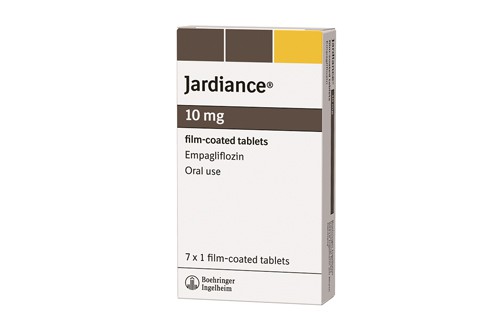
The results of a landmark trial showing that Eli Lilly and Boehringer Ingelheim’s Jardiance can reduce deaths in patients with diabetes have been presented for the first time.
The top-line findings from the EMPA-REG OUTCOME trial were disclosed last month. This week, however, doctors got their first look at the full data set, which was simultaneously presented at the European Association for the Study of Diabetes (EASD) annual meeting and published in the New England Journal of Medicine.
Diabetes is known to raise the risk of cardiovascular (CV) complications such as heart attack, stroke and death, but to date no study has shown conclusively that using drugs to control blood glucose in diabetics can lower risk.
The 7,000-patient trial revealed that after a median follow-up of around three years, Jardiance reduced the risk of CV death, non-fatal heart attack or non-fatal stroke by 14% compared to placebo when added to standard care that included cardiovascular medicines.
The benefit derived mainly from a 38% reduction in CV death, as there was no significant difference in the risk of non-fatal heart attack or non-fatal stroke, according to Silvio Inzucchi of Yale Diabetes Centre in the US, who presented the results at EASD.
Moreover, Jardiance was associated with a significant 32% reduction in all-cause mortality and reduced rates of heart failure hospitalisations by 35%, underscoring the clear benefit of the drug in this setting.
The scale of the improvement and the fact that the benefit seemed to accrue so early – as little as three months after treatment started – seems to have taken many diabetes specialists by surprise.
The study also raises a lot of questions. Most importantly, the lack of an impact for the drug on heart attack and stroke suggests that Jardiance may be having a benefit via a different mechanism than previously thought, in other words not simply by reducing blood glucose, and that could force a rethink of how diabetes is treated.
The NEJM paper notes that the reasons for the benefit remain speculative but could involve changes in arterial stiffness, cardiac function and cardiac oxygen demand, among others, while Inzucchi hypothesised that it may be linked to the drug’s stimulation of glucose clearance in the urine.
Overall, the findings give Lilly and Boehringer a lift versus their rivals in oral type 2 diabetes therapy, as Merck & Co’s DPP-4 inhibitor Januvia (sitagliptin) was shown in the TECOS outcomes study to be no better (or worse) than placebo. Similarly, Sanofi’s injectable GLP-1 agonist Lyxumia (lixisenatide) also failed to improve outcomes in the ELIXA trial.
It also gives Jardiance a lead over other SGLT2 inhibitors, as it will be at least two years before a cardiovascular outcomes study for market leader Invokana (canagliflozin) from Johnson & Jonson (J&J) is ready.
The discussant for the trial at the EASD, Hertzel Gerstein from McMaster University in Canada, said the data could make SGLT2 inhibitors the first-line therapy of choice for type 2 diabetics at elevated cardiovascular risk.




